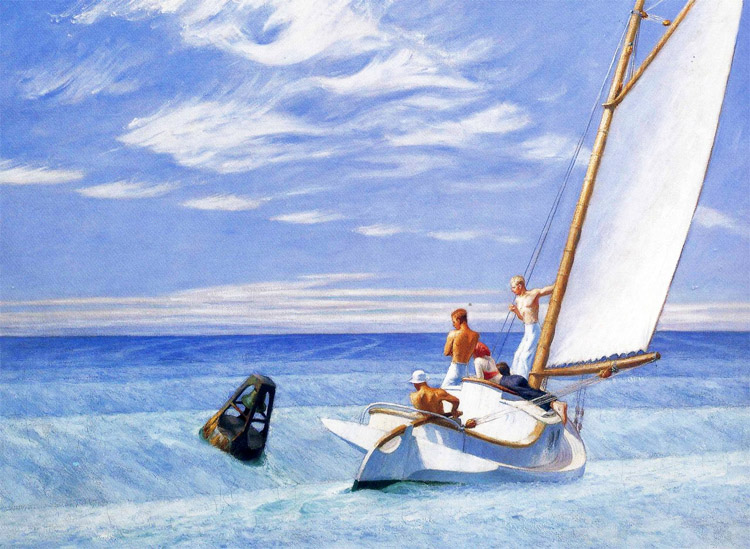Swells have been a studied subject and source of fascination for centuries.
In 1939, Realist artist Edward Hopper painted "Ground Swell," in which sailors look a bit concerned about a possible wipeout.
Waves are a product of the wind.
When winds blow over the surface of the oceans, the energy is transferred to the water and creates a swell or a group of traveling waves.
There are two swells relevant to surfing: ground swells and wind swells.
Ground swells are the result of intense winds pressing on the surface of the ocean, thousands of miles away from the coastline.
It's All About The Wind
Ground swells are usually the best sources of waves for surfing.
When strong and intense storms and wind affect the seas, they produce "wave trains" that make their way to the shores, where they lose energy.
These long-distance winds produce the fetch.
The fetch is the area in which the winds apply their forces. Here, they are often studied in order to understand the strength and direction of future swells.
The fetch can also produce a large swell depending on the power of the winds. Fortunately, ground swells lose energy during their journey to the shores.
The long distances covered by these swells usually mean greater wave quality overall.
Although they create choppy wave conditions in the creation zone when the "wave train" reaches a surf spot, it brings the cleanest surf with it, often with long wave periods.
So what, then, are wind swells? When local winds blow over the surface of the water near the shores, they create wind swell waves.
These short-period waves usually make for decreased-quality surf conditions and choppy waters.
It is possible to discover the origin of the swell heading your way.
The wave height forecast tracks long-distance swells heading to your surf spot. Check out yours before hitting the water.
Want to know more about swells? Discover the best surf forecasting books.
